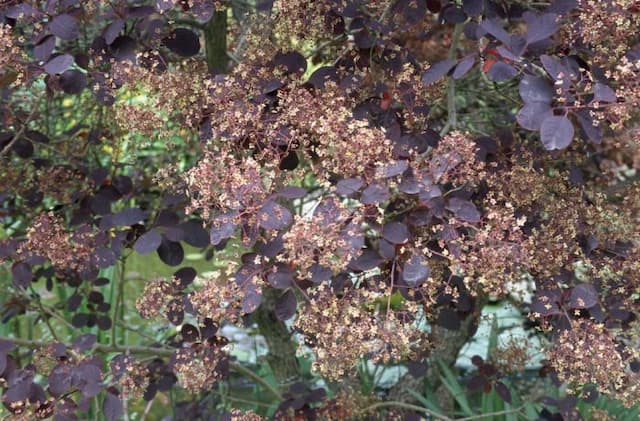Smoke Tree Cotinus coggygria Rubrifolius Group











ABOUT
The Cotinus coggygria from the Rubrifolius Group, commonly known as the Smoke Bush or Smoke Tree, is a visually striking plant that gets its common name from the cloud-like puffs of flowers it produces, which resemble smoke from a distance. This particular selection is admired for its foliage which undergoes a vibrant transformation throughout the growing season. During spring, the leaves emerge with a rich, purplish-red color that creates a dramatic display in the garden. As the seasons progress, the leaves may evolve to a deeper, wine-red or sometimes develop a green undertone depending on the amount of sunlight they receive. In autumn, the plant can be expected to put on a brilliant show again as the leaves turn to stunning shades of orange, red, or purplish-pink before they fall. This Smoke Bush produces the characteristic misty plumes in summer, consisting of countless tiny flowers, each with a long, hairlike stalk that creates the fluffy, smoke-like appearance. These flower clusters can range in color from a pinkish-purple to a faded smoky gray, adding to the plant's unique aesthetic. The Smoke Bush presents a pleasingly rounded and bushy habit, with a multitude of stems that form an open, airy structure. Even without its leaves and floral smoke, the bare stems and the branching pattern of the Smoke Bush provide a pleasing silhouette in the winter landscape, especially with a backdrop of snow or against the clear winter sky. In summary, the Smoke Bush from the Rubrifolius Group is a deciduous shrub cherished for its vivid foliage, spectral summer blooms, and stately yet whimsical form, making it a standout specimen in any garden that aims to have year-round visual interest.
About this plant
 Names
NamesFamily
Anacardiaceae.
Synonyms
Smoke Tree, Smoke Bush, Venetian Sumac, Royal Purple Smoke Bush, Purple Smoke Tree.
Common names
Cotinus coggygria 'Purpureus', Rhus cotinus 'Purpureus', Cotinus coggygria var. purpureus, Cotinus coggygria f. purpureus.
 Toxicity
ToxicityTo humans
The plant commonly known as Smoke Tree is not known to be toxic to humans. Therefore, there are no well-documented symptoms of poisoning associated with the ingestion of any part of this plant to humans.
To pets
The Smoke Tree is not listed as a toxic plant to pets such as dogs and cats. The ingestion of this plant is unlikely to cause poisoning, and there are no common symptoms associated with its ingestion for pets.
 Characteristics
CharacteristicsLife cycle
Perennials
Foliage type
Deciduous
Color of leaves
Purple
Height
10-15 feet (3-4.5 meters)
Spread
10-15 feet (3-4.5 meters)
Plant type
Shrub
Hardiness zones
5
Native area
Europe
Benefits
 General Benefits
General Benefits- Ornamental Appeal: The Cotinus coggygria, commonly known as Smoke Bush, is highly valued for its decorative, plume-like inflorescences that resemble smoke, adding visual interest to the landscape.
- Seasonal Color: Smoke Bush showcases vibrant foliage that changes colors throughout the seasons, starting from purple or red in spring to shades of orange, red, and yellow in autumn.
- Low Maintenance: Due to its adaptability to different soil conditions and overall hardiness, the Smoke Bush requires minimal upkeep once established, making it suitable for low-maintenance gardens.
- Drought Tolerance: Once established, the Smoke Bush is tolerant of dry conditions, making it a good choice for drought-prone regions or water-wise gardens.
- Wildlife Attraction: The flowers and seeds of the Smoke Bush attract birds and beneficial insects to the garden, contributing to local biodiversity.
- Shade Provision: With its bushy growth habit, the Smoke Bush can provide dappled shade in garden settings, making it useful for planting in sunny areas where shade is desired.
- Privacy and Screening: Due to its size and density, Smoke Bush can be used as a natural screen or hedge, offering privacy in residential gardens.
- Soil Erosion Control: The Smoke Bush's root system can help stabilize soil and prevent erosion on slopes or in areas with loose soil.
- Architectural Interest: The unique shape and texture of the Smoke Bush make it ideal for adding architectural interest to garden designs and landscapes.
 Medical Properties
Medical PropertiesThis plant is not used for medical purposes.
 Air-purifying Qualities
Air-purifying QualitiesThis plant is not specifically known for air purifying qualities.
 Other Uses
Other Uses- Dye Production: The leaves and bark of the Smoke Bush can be used to produce a natural dye for textiles, yielding various shades of yellow and orange.
- Photography: Smoke Bush's unique and vibrant foliage is often used as a stunning backdrop for outdoor photography sessions.
- Insect Repellent: When burnt, the leaves of the Smoke Bush may help to repel insects, although this is not a primary use of the plant.
- Fence or Border: Due to its dense foliage, the Smoke Bush can be planted in rows to form a natural privacy screen or property border.
- Art Supplies: The vibrant leaves of the Smoke Bush can be used to make natural inks for drawing or calligraphy.
- Bonsai: The Smoke Bush can be trained into a bonsai form, offering an unusual and attractive miniaturized version for enthusiasts.
- Frost Protection: Planting Smoke Bush near more frost-sensitive plants can provide a level of protection, as it can withstand cooler temperatures.
- Theme Gardens: Smoke Bush can be used in themed gardens such as 'fire' themed landscapes due to its red and orange foliage resembling flames.
- Seasonal Decor: Branches of the Smoke Bush, with their distinctive smoky plumes, can be used in floral arrangements or as part of fall decor in wreaths and displays.
- Culinary Presentation: While not eaten, the Smoke Bush leaves can be used as a decorative garnish for plating high-end dishes, adding a touch of color and sophistication.
Interesting Facts
 Feng Shui
Feng ShuiThe Smoke Tree is not used in Feng Shui practice.
 Zodiac Sign Compitability
Zodiac Sign CompitabilityThe Smoke Tree is not used in astrology practice.
 Plant Symbolism
Plant Symbolism- Regeneration and Renewal: The Cotinus coggygria, commonly known as Smoke Tree, often sprouts new leaves and can rebound from damage, symbolizing the ability to recover and start anew.
- Mystery and Illusion: The Smoke Tree's fluffy, cloud-like blooms give it an ethereal appearance, representing mystery, illusion, and things not being as they appear.
- Transformation: The Smoke Tree's leaves change color dramatically with the seasons, from a purplish-red to yellow or orange, symbolizing transformation and change.
 Water
WaterThe Smoke Tree, which is the common name for Cotinus coggygria 'Rubrifolius' Group, requires moderate watering. During the growing season in spring and summer, it should be watered once a week with approximately 1 to 1.5 gallons of water per event, making sure the soil is moist but not waterlogged. In the fall and winter, reduce watering to every other week or less, depending on the weather conditions, as the plant is dormant and requires less moisture. Always check the top inch of soil for dryness before watering to avoid overwatering.
 Light
LightSmoke Trees thrive in full sun conditions, meaning they prefer to be placed in a location where they receive at least six hours of direct sunlight each day. The ideal spot for a Smoke Tree is an area that is sunny for most of the day with some light afternoon shade in hot climates to protect the foliage from scorching.
 Temperature
TemperatureSmoke Trees are hardy and can withstand temperatures as low as approximately -20°F and as high as 100°F. The ideal temperature range for these plants is between 60°F and 80°F. They can tolerate some temperature fluctuations, but extreme cold or heat for prolonged periods can be detrimental to their health.
 Pruning
PruningPruning Smoke Trees is done to maintain their shape and encourage the growth of the large, smoke-like plumes for which they are named. Prune during the dormant season, in late winter or early spring, removing any dead or damaged branches. Some gardeners may also choose to prune for size control or to create a more tree-like form by removing lower branches; this should be done sparingly to avoid stress to the plant.
 Cleaning
CleaningAs needed
 Soil
SoilThe Smoke bush (Cotinus coggygria) prefers well-draining soil with added organic matter. A mix consisting of loamy soil, peat, and perlite or coarse sand can provide the appropriate texture and nutrients. The ideal pH for this plant ranges between 5.5 and 7.5, moderately acidic to neutral.
 Repotting
RepottingSmoke bush typically does not need frequent repotting as it is usually grown as a shrub in outdoor settings. If grown in containers, young plants should be repotted every 2-3 years, but mature plants can go longer before needing a larger pot.
 Humidity & Misting
Humidity & MistingSmoke bush is adaptable to a wide range of humidity levels; it does not require high humidity. Average ambient humidity found in outdoor environments is generally adequate for this hardy plant.
 Suitable locations
Suitable locationsIndoor
Grow Smoke bush in large containers with ample light indoors.
Outdoor
Plant Smoke bush in full sun, ensure soil drainage.
Hardiness zone
5-9 USDA
 Life cycle
Life cycleThe Cotinus coggygria, commonly known as Smoke Bush or Smoke Tree, begins its life cycle with seed germination, which requires a period of cold stratification to break dormancy. After germination, a young seedling emerges and starts the vegetative growth phase, developing roots, stems, and the distinctive reddish-purple leaves of the Rubrifolius Group. As the plant matures, it enters the reproductive phase, typically in late spring to early summer, producing flower inflorescences that appear as smoky plumes due to the numerous fine hairs on the flowers. Following pollination, the plant produces small, three-lobed, hard fruits that persist into winter, which then disperse to give rise to new plants. Throughout its life, the Smoke Bush will undergo seasonal changes, with leaves turning vibrant shades of orange, red, or purple in the fall before shedding for winter dormancy. Over the years, with proper care and favorable conditions, the Smoke Bush can grow into a multi-stemmed shrub or small tree, and it can live for decades, continuously going through these growth stages.
 Propogation
PropogationPropogation time
Early spring
Propogation: The most common method of propagating the Smoke Bush (Cotinus coggygria) 'Rubrifolius Group' is through softwood cuttings taken in late spring or early summer. To propagate, select a healthy, non-flowering stem and cut a 4 to 6-inch (about 10 to 15 cm) portion, ensuring it has several leaf nodes. Strip the leaves from the lower half of the cutting and dip the cut end in rooting hormone to encourage root development. Plant the cutting in a well-draining soil mix, and place it in indirect light while keeping the soil consistently moist but not waterlogged. Cover the cutting with a plastic bag or place it in a propagator to maintain high humidity. Roots typically develop within a few weeks, after which the new plant can be gradually acclimatized to normal growing conditions.

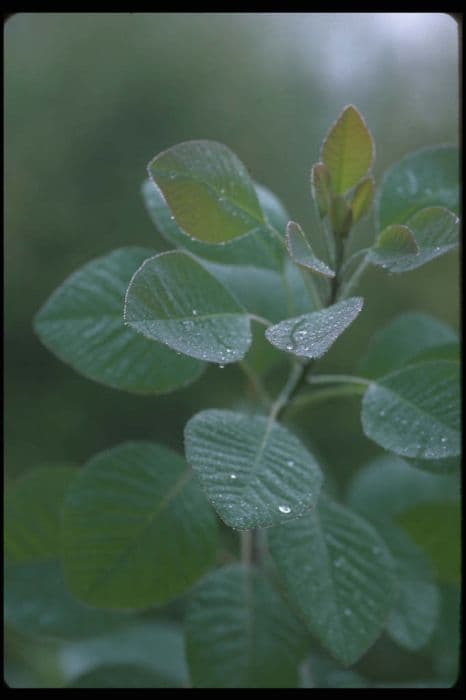
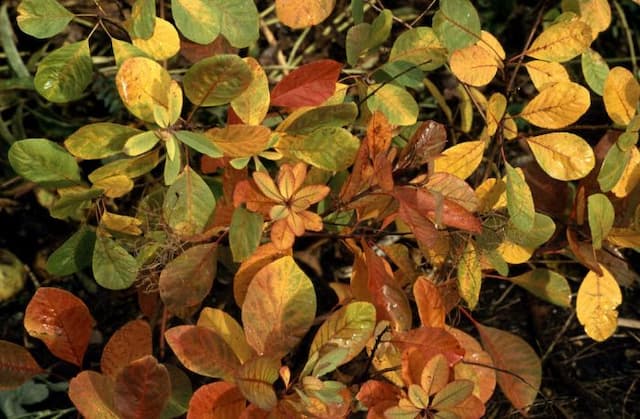
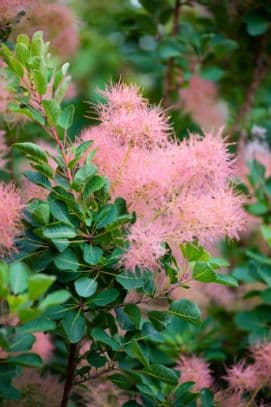
![Smoke tree [Golden Spirit]](/_next/image?url=https%3A%2F%2Fplants-admin.emdemapps.com%2Fimages%2Fplants%2F%2Fimages%2F604b63b450a12.png&w=640&q=75)
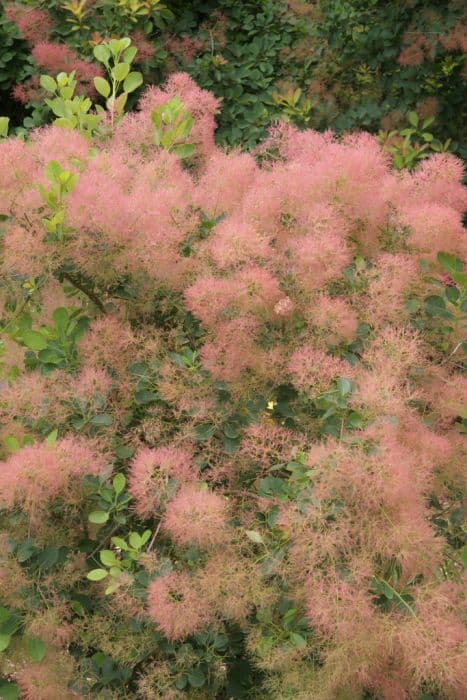

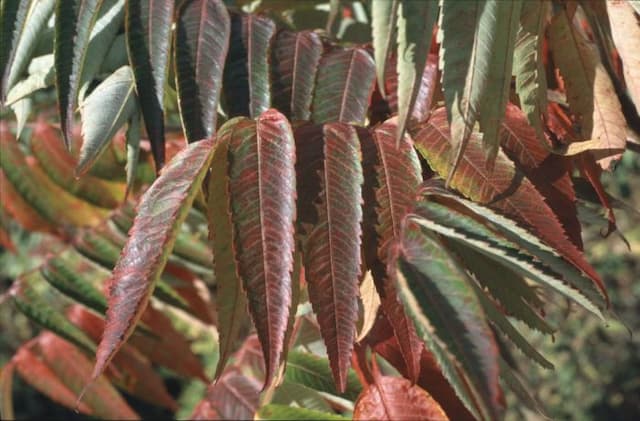
![Stag's horn sumach [Radiance]](/_next/image?url=https%3A%2F%2Fplants-admin.emdemapps.com%2Fimages%2Fplants%2F%2Fimages%2F604b6223f1c1d.png&w=640&q=75)
